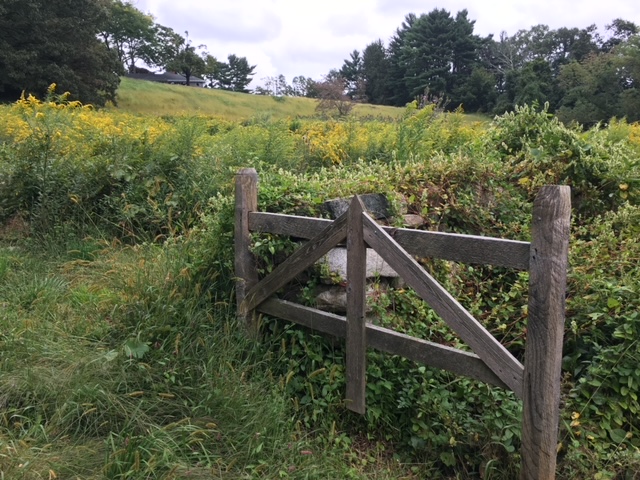
Livingston-Higley Meadow
The wind rustles through the grasses. Song sparrows and crickets serenade. Tree swallows soar overhead, catching insects on the wing. A cottontail nibbles clover on the edge of the path. Butterflies flutter about the wild bergamot. A praying mantis clings to a thistle, waiting to pounce on an unsuspecting passing bee. Such is life in the Livingston- Higley meadow in high summer.
Meadows are unique habitats that support different species of plants, insects, birds, and animals than those found in our forested lands. They abound with many types of grasses, grape vines, legumes, and wildflowers, such as asters, goldenrods, bergamots, Joe Pye weeds, black-eyed Susans, milkweeds, and coneflowers. They provide shelter, nesting spots, places for insects to overwinter, and abundant food.
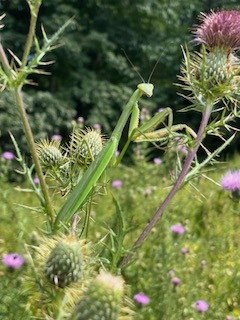



From L-R: praying mantis, tiger swallowtail butterfly, red grasshopper, golden digger wasp
Think of a meadow as a giant natural grocery with:
1. Nectar and pollen for pollinators (bees, wasps, butterflies, moths, beetles, flower flies, and hummingbirds)
2. Host plants with leaves to feed developing caterpillars and other insects (such as milkweed for monarchs; legumes for skippers)
3. Fruits, seeds, drupes, buds, and forage for birds and mammals
4. Fueling and resting spots for migrating birds
5. A constant supply of biomass to keep the food web churning – all living creatures either eat plants and/or some other creature that eats plants
Meadows are especially important habitats for goldfinches, song sparrows, bluebirds, and tree swallows. Goldfinches are strict vegetarians and one of the few songbirds to raise their young on seeds, and they rely on the rich seed bank that meadows provide. Song sparrows prefer to nest amidst grasses and tall vegetation. Bluebirds mostly feed on the ground and, during warmer months, hunt for insects in the low undergrowth. Tree swallows nest near open meadows with abundant flying insects for their young.
Meadows are also home to rabbits, groundhogs, voles, white-footed mice, snakes, toads, frogs, and box turtles. They are visited by deer, wild turkeys, and predators such as foxes, coyotes, bobcats, hawks and owls.
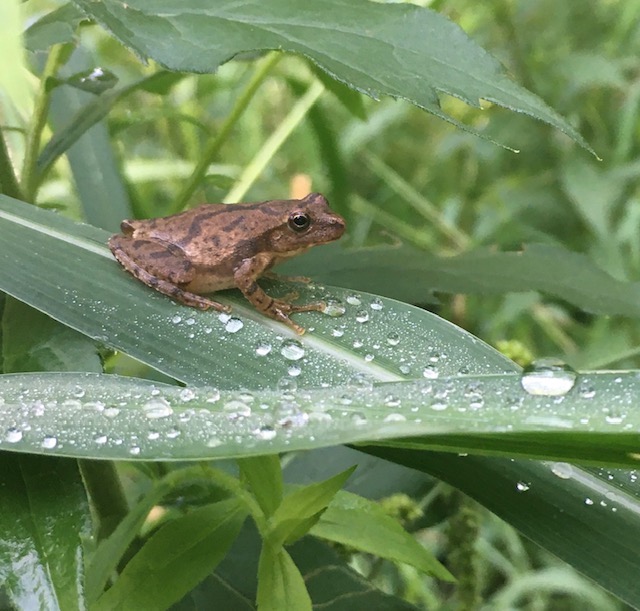
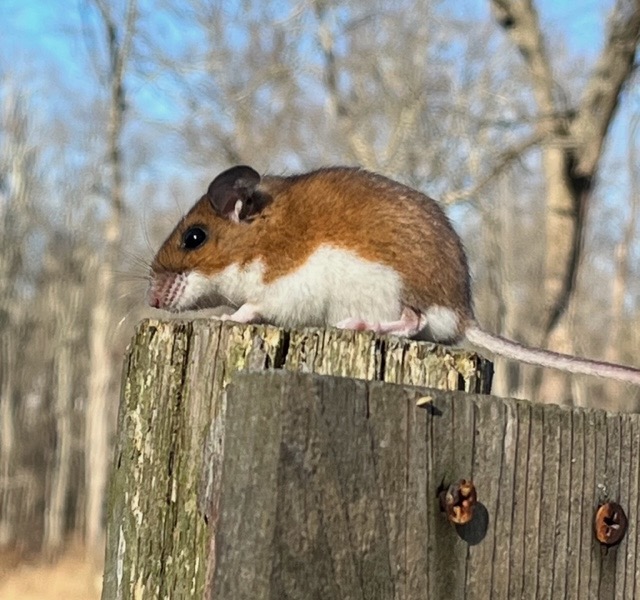
From L-R: spring peeper and white-footed mouse
In New Canaan and throughout Connecticut, meadows rapidly disappear as former farmland reverts to forest or is plowed under to make way for urban and suburban sprawl. When meadows disappear, so do entire ecosystems.
The NCLT preserves about 6 ½ acres of meadows across town. In addition to Livingston-Higley, our meadow sanctuaries include Silvermine-Fowler and Hicks Meadow (both part of Still Pond Preserve), the Hannan-Eberstadt Field, the Firefly Sanctuary, Colhoun Preserve, and Hawkins Meadow. We also steward a few additional meadows which are not open to the public. While Silvermine-Fowler was purposedly planted, our other meadows are former pastures and hay fields. All are transitional in nature, which means that if left alone, they will soon revert to forest.
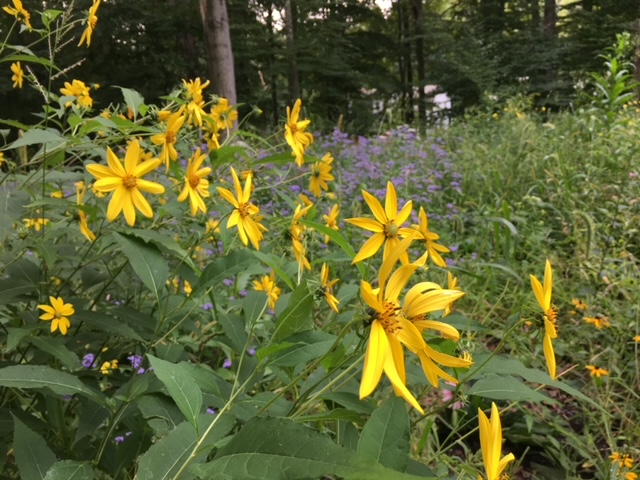
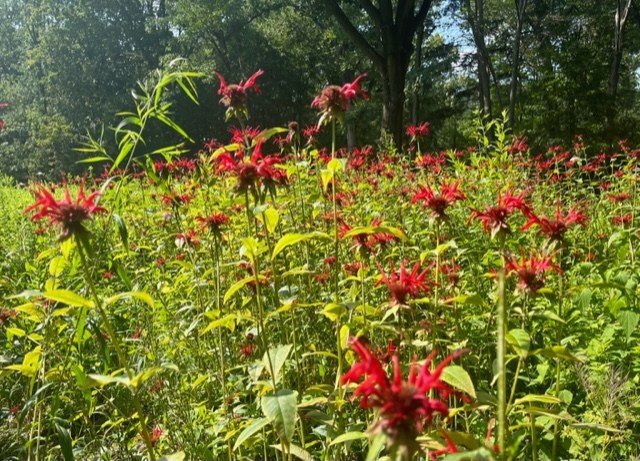
From L-R: woodland sunflowers and red bee balm planted at Silvermine-Fowler
We mow our meadows only once a year to provide the most year-round benefit to wildlife. This usually occurs in late December or early January, depending on the weather. We wait for a good hard freeze to ensure that the insect life has gone into hibernation for the winter. If the winter is unusually mild, like last winter, we may hold off mowing until early March. Occasionally we must brush hog stubborn invasive species such as multiflora rose, Japanese honeysuckle, and autumn olive. This past spring, we added honeybee hives to four of our preserves.
Our public meadows are open and beautiful in all seasons. Come out and explore them.
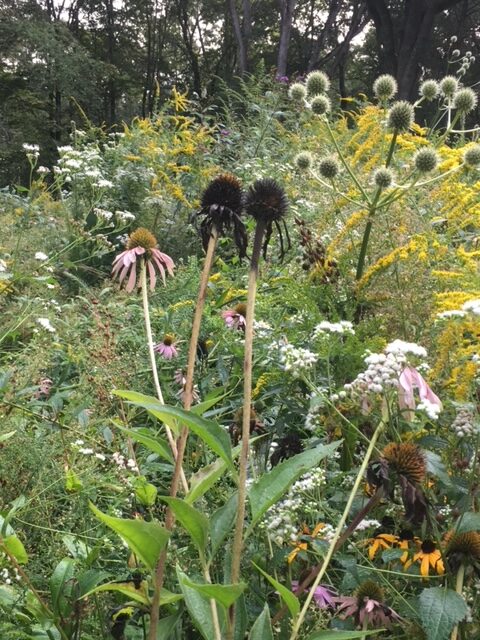
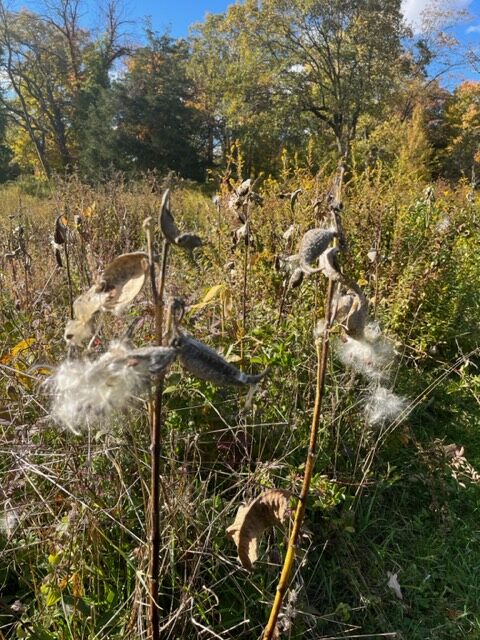
From L-R: coneflower and milkweed seeds in fall

Winter meadow
Recent Comments